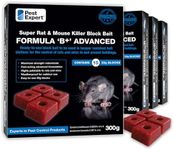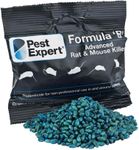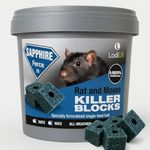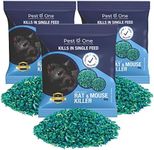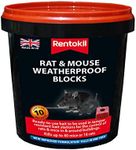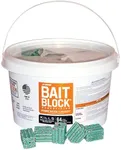Buying Guide for the Best Rat Poisons
Choosing the right rat poison is crucial for effectively managing a rodent problem while ensuring safety for humans, pets, and the environment. When selecting a rat poison, it's important to consider the type of infestation, the environment where it will be used, and any potential risks to non-target animals or humans. Understanding the different types of rat poisons and their active ingredients can help you make an informed decision that balances effectiveness with safety.Active IngredientThe active ingredient in rat poison is the chemical that kills the rodents. Common active ingredients include anticoagulants, bromethalin, and zinc phosphide. Anticoagulants work by preventing blood clotting, leading to internal bleeding, while bromethalin affects the nervous system, and zinc phosphide releases toxic gas in the stomach. It's important to choose an active ingredient based on the severity of the infestation and the presence of non-target animals. For example, if you have pets, you might want to avoid poisons with secondary poisoning risks, like anticoagulants.
Formulation TypeRat poisons come in various formulations, such as pellets, blocks, and bait stations. Pellets are small and can be scattered in hard-to-reach places, while blocks are larger and can be secured to prevent accidental ingestion by non-target animals. Bait stations are enclosed containers that hold the poison, providing a safer option for use around children and pets. The choice of formulation depends on where you plan to use the poison and the level of safety required. For outdoor use or areas accessible to pets, bait stations are often recommended.
Toxicity LevelToxicity level refers to how potent the poison is and how much is needed to kill a rat. High-toxicity poisons require less bait to be effective, which can be useful for large infestations. However, they also pose a higher risk to non-target animals and humans. Low-toxicity options may be safer but might require more bait and time to see results. Consider the size of the infestation and the potential risk to other animals when choosing the toxicity level. If safety is a major concern, opt for a lower toxicity level and use in conjunction with traps.
Environmental ImpactThe environmental impact of rat poison is an important consideration, especially if you are using it outdoors. Some poisons can harm wildlife or contaminate water sources. Look for products that are designed to minimize environmental harm, such as those with biodegradable ingredients or those specifically labeled as safe for use near water. If you are concerned about the environment, choose a poison with a lower environmental impact and follow all usage instructions carefully to prevent contamination.
Safety FeaturesSafety features in rat poisons are designed to prevent accidental ingestion by children, pets, or non-target wildlife. These can include tamper-resistant bait stations, bittering agents to deter ingestion, and clear labeling with safety instructions. When safety is a priority, look for products with these features and ensure they are used according to the manufacturer's guidelines. If you have children or pets, prioritize products with robust safety features to reduce the risk of accidental poisoning.

